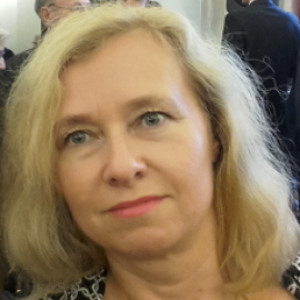Title : The effect of ionic liquids on the photocatalytic activity of BiOX semiconductors in cytostatic drug degradation
Abstract:
The effect of ILs cation type (imidazolium, pyridinium and pyrrolidinium) on the morphology, surface properties and photoactivity of BiOX type semiconductors obtained by solvothermal method, has been systematically investigated. The physicochemical properties of BiOX photocatalysts were characterized by means of X-ray diffraction (XRD), Scanning electron microscopy (SEM), X-ray photoelectron spectroscopy (XPS), Fourier transform-infrared spectroscopy (FT-IR), Brunauer-Emmett-Teller (BET) method, UV-vis diffuse reflectance spectra (UV-vis/DRS) and photoluminescence spectra (PL). Rhodamine B and 5-fluoruracil were used as the model compopunds to evaluate the adsorption capacity and photooxidation performance of studied BiOX. Removal of chromium (VI) from acidic solution was demonstrated photoreduction ability of BiOX.
The obtained results indicate a significant influence of the ionic liquid on the morphology and photocatalytic activity of bismuth-based semiconductors prepared by the solvothermal method. The loosening of the structure and increasing the particle size of the photocatalysts due to ILs use were observed. Changes of the obtained bismuth oxyhalides structures were also associated with the increase of their BET specific surface area and pore volume. The beneficial influence of the use of ionic liquids in the solvothermal synthesis process on the energy band gap value of the obtained bismuth semiconductors was noticed. The extension of energy band gap in the bismuth oxybromides and oxyiodides, and the reduction of energy band gap in the bismuth oxychlorides prepared by IL-assisted solvothermal method were obtained. Using the ionic liquid assisted solvothermal method well-formed crystalline structures (XRD) without residues of ILs on their surface (XPS, FT-IR) were synthetized.
Moreover, the BiOX samples synthetized with ionic liquids were applied to remove of some cytostatic drugs from water. Based on the identified intermediates of drugs degradation and photogenerated oxidants participated in drug degradation under BiOBr. The degradation pathway of some cytostatic drugs was proposed.
The obtained results indicate that the use of ionic liquids as a halogen source can increase the photocatalytic activity of bismuth oxyhalides. The materials effective purified the water from micropollutants such as cytostatic drugs. However, their beneficial effects should be considered individually in relation to particular micropollutant and an oxidation or reduction processes.



